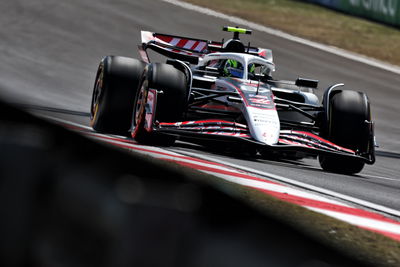'Clued up' Lotus avoids repeat of Shanghai tyre surprise

There was little chance of Kimi Raikkonen suffering the same fate as he endured at the end of last year's Chinese Grand Prix, despite the Lotus team pushing his final stint close to the limit.
The Finn plummeted from a podium position to be out of the points altogether in the closing laps of the 2012 race but, despite taking a chance in order to vault him past Lewis Hamilton, the Enstone squad was confident that there would be no repeat this time around.
"We had an interesting start, with Kimi losing places, but, once we got onto the prime tyres, things went pretty smoothly," trackside operations director Alan Permane reported on the team website, "However, there was no way we could get past Lewis, even though we had a very similar pace and, perhaps, were even quicker than him.
"We pulled Kimi in very early for his last pit-stop - right on what we felt was on the limit of what we could do comfortably - and that meant we jumped [Hamilton]. From then, it was a case of managing the tyres and Kimi did an excellent job to take a very good second place.
"We are certainly more clued up this year and we learnt a lot last time about the tyre wear with this philosophy of tyre performance. Today, it wasn't a risk. It was about the limit of what we could do - we wouldn't have been able to do more than that - but it certainly wasn't as risky as last year, when we knew we were pushing the boundaries to see what could be achieved."
Raikkonen's task of managing the tyres was complicated by the damage he received in an earlier collision with McLaren's Sergio Perez, which left him with a visible hole in his nose and parts missing from the front wing.
The Finn claimed after the race that he had wanted to change the wing, but Permane insisted that, especially with the car continuing to run competitively, there were more risks in carrying out the repair than leaving its performance compromised.
"We were still running well without changing it - even being the fastest car on track on occasion - so we could see that the car was still good," he emphasised, "The damage was a handicap, but not enough to warrant changing the wing, which would add a minimum of six or seven seconds to the stop itself, plus bring the additional risk of a related issue due to the car being stationary in the pit-lane for ten or so seconds.
"We estimate that he lost up to about 0.25secs per lap because of the damage.
He lost quite a bit of carbon from the wing, though some was quite resilient; holding on to the nose and refusing to let go. At each pit-stop, we were winding on front wing to counter the loss of downforce and this did a reasonable job of cancelling out the damage."
Raikkonen confirmed that the damage only had a minor effect on the E21's handling, and barely compromised the car's pace.
"It was just a bit too much understeery, and it was destroying the front tyres because of that, but we could still fight for second place," he said, "For sure, without the damage, we could have been quite a bit faster.
"There's no way to tell or not how much the front wing damage affected the whole race. Obviously, the car is not designed [to run] like that, so it's not going to help, but I cannot tell you if it's a tenth or half a second per lap. I was surprised how good the car was, even with quite a lot of damage. It was unfortunate, but I think we also have to be a bit lucky not to lose more. I could still overtake people."
Asked whether he thought Fernando Alonso's victory, achieved without significant problems from either tyre compound, signalled a shift in power from Red Bull to Ferrari, Raikkonen insisted that F1 remained as unpredictable as it had been at round one.
"As Fernando said, from race to race, one team is a little bit stronger and the next race is a bit of a different story," he concluded, "I think all four teams are close to each other, so whoever gets it best on Sundays and Saturdays will win. It will be interesting..."











